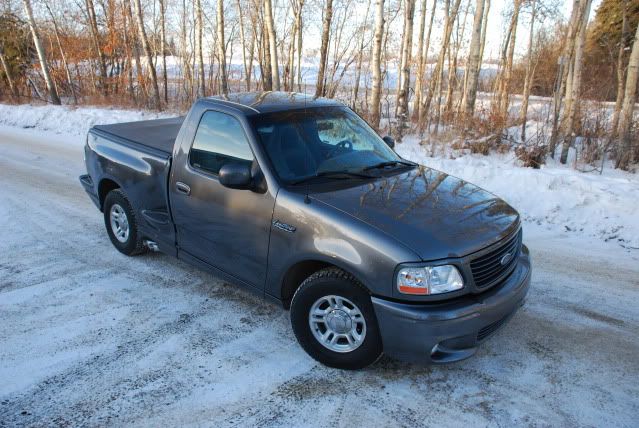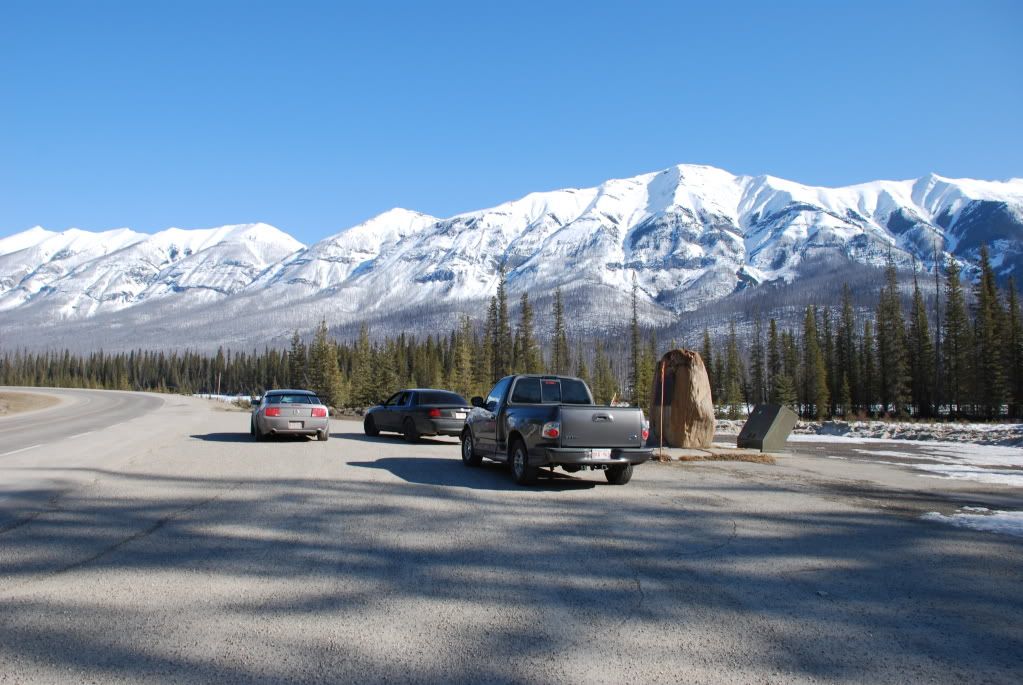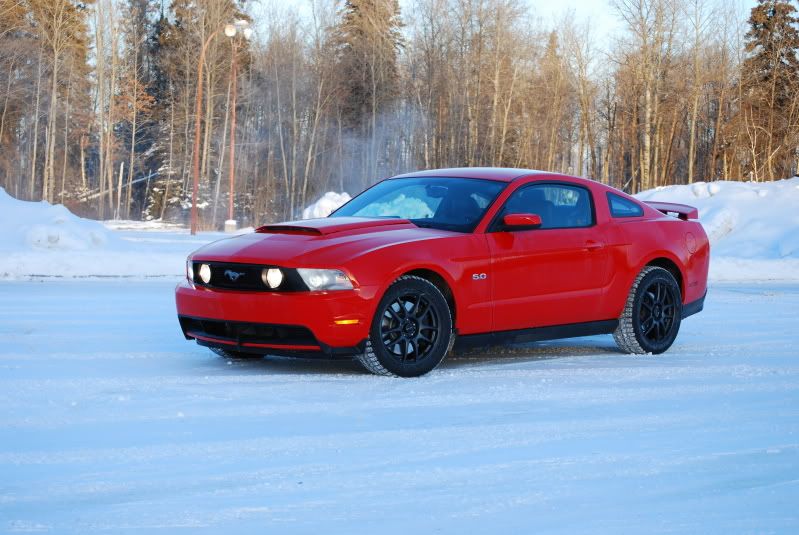 |
| Darren5.0L's 2003 SVT Lightning in winter trim. |
“How to you drive THAT in the winter?” Is a question I, and many of my friends are frequently asked. In the case of me, it’s a modified 2003 SVT Lightning pickup truck with over 400 horsepower at the flywheel, in the case of my friends one of them is a 500+ BHP Mercury Marauder, two of them run brand new 2011 Ford Mustang GT 5.0L, another employs his 1995 Ford Mustang GT, and finally one with a Dodge SRT-8 Magnum.
None of us have made huge investments in new body panels over the last number of years nor have we made a habit of crashing about in our performance vehicles. In fact none of this should be a big thing to boast about.
 | |
| L to R: 2006 Mustang GT, 2003 Supercharged Mercury Marauder, 2003 SVT Lightning |
The reason that this isn’t a big deal, is because high performance cars are just like any other car when it comes down to basic pieces, except they have “all that horsepower”. A common misconception is that a performance vehicle comes equipped with an ON/OFF switch in place of a throttle, either you are at idle, or shredding snow & ice with hundreds of horsepower. This is not the case, any performance vehicle can have the engines output to the tires modulated by using the throttle, and in many cars the light throttle condition produces surprisingly small amounts of easily manageable power.
Proper equipment is an often overlooked component to winter driving in any vehicle, but is especially important should you choose to run a performance car. Performance cars come equipped with performance tires, almost always suited specifically for warm weather wet & dry traction, by contrast this makes them completely unsuited for winter operations.
 |
| A_Gorman's 2011 Mustang GT 5.0L |
You may find your vehicle comes with a tire warning sticker or section of the manual that recommends against winter operation of the factory equipped tires. The solution is simply to purchase and install a dedicated winter tire. A second set of wheels can easily be found and used exclusively as the winter set to avoid hassles.
In a rear wheel drive application some vehicles will tend to feel a little “light” in the back end. This can be easily remedied with the installation of ballast such as sandbags until your preferred handling characteristics are achieved.
Performance cars, once suitably equipped, are surprisingly easy to drive and handle in winter conditions. They will be as capable as nearly any other non-4X4 on the roads and in many cases will feature many advanced driver aids to ease your trip. Traction control, Anti-lock brakes, and Stability management are quite refined presently and can make for a very tame journey through winter conditions.
Most people who have tried winter driving with a performance vehicle and given up have often never bothered to properly equip their car, subsequently the failed experiment is usually blamed upon the capabilities of it.
In closing, it can be done, and it isn’t that big of a deal.
